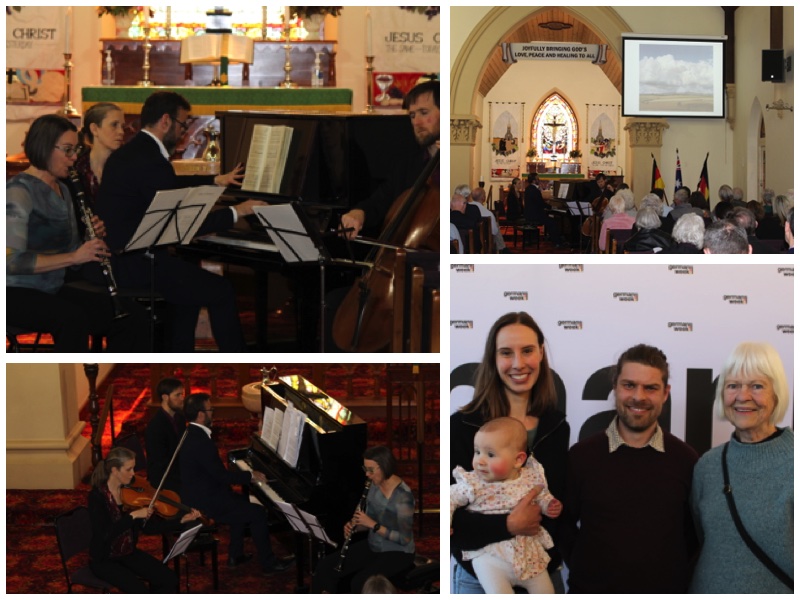by John Clarke
Making Musical Connections
Music has always brought people together, whether to sing, play an instrument in a group, or simply to listen. The Kegelstatt Ensemble’s “Barossa Deutsch” Konzert brought people from Adelaide and all parts of the Barossa Valley to the Langmeil Lutheran Church, Tanunda to experience an extraordinary programme that brought together different times, different places and different media.
The concert was the Barossa German Language Association’s contribution to the annual Adelaide German Week and was attended by the Honorary German Consul to South Australia, Matthew Williams, so reinforcing the historic South Australian/German connection.
It was fitting too that the venue for the concert should be the beautiful Langmeil church. For composers such as Johann Sebastian Bach, whose powerful Fantasia in G Minor, played on Langmeil’s organ by Josh van Konkelenberg, was the first item on the programme, employment by a church as Kapellmeister (musical director) provided the financial security needed to develop their talent. Ludwig van Beethoven, whose Trio for clarinet, cello and piano, was also performed, was another who at one stage of his career held the position of Kapellmeister. Max Reger was a later composer – excerpts from his work were played on the viola by Anna Webb – but he too had a church connection as musical director at the Leipzig University Church.

But what made the concert truly memorable and uniquely connected to the Barossa Valley were the contemporary compositions Barossa Deutsch by Robert Davidson and Gomersal – an appreciation by David J Lang. In Barossa Deutsch were heard the voices of Barossa identities Wally Stiller, Dennis Hage and Don Ross, speaking Barossa Deutsch, the language of their childhood, the tones and modulation of their speech twining and rippling with the music.
David Lang wrote of his composition, which was accompanied by projections of Gomersal scenes past and present: “I have tried to capture something of the shape of the land and its story in this suite of connected movements. There are musical motifs that suggest the vastness of the sky, the gentle slopes up from the creek, and even the contour of the Kaiserstuhl hills in the distance. A phrase from the famous Lutheran hymn Ein feste Burg (“A mighty fortress is our God”) makes an occasional appearance, in a nod to Gomersal’s church community. The work was commissioned by Nat Schmaal in memory of her husband Ian, a direct descendant of the first German settlers in the area in the 1850s.”
The name Kegelstatt (skittle alley) was taken from Mozart’s Kegelstatt Trio, which he said was composed in his head while playing skittles. It is a fitting name for the Kegelstatt Ensemble – Steph Wake-Dyster, Anna Webb, Kim Worley and Josh van Konkelenberg – who combine their technical excellence with an infectious sense of fun.
